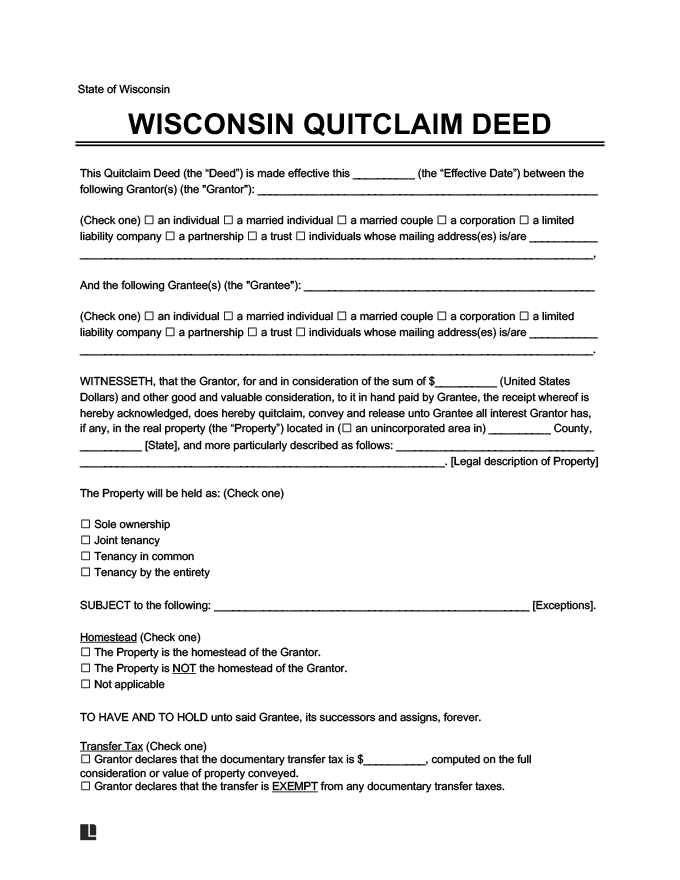When drafting a quitclaim deed in Wisconsin, you should follow specific steps to ensure your document will be legally enforceable.
Step 1: Find All Relevant Documentation
Before filing a quitclaim deed, secure the title to the property and check it to ensure all the information is accurate. You should also make sure you have the funds to handle filing fees and transfer taxes.
Step 2: Fill out the Quitclaim Deed Form
Starting with our template will streamline the process and make sure that you have all the necessary details in your document.
While state laws, including Wis. Stat. § 706.001, do not require specific language for a quitclaim deed, you should still make sure that you include all relevant information about the property transfer, including the grantor’s and grantee’s names, the legal description of the property, and the name of the person who prepared the document.
Step 3: Validate the Grantor’s Signature
Wis. Stat. § 706.02 notes that the grantor’s signature must be verified to make the quitclaim deed binding and legal. Most often, the grantor will take the document to a notary, who will witness their signature and notarize the document.
Prepare to show a valid ID to the notary. You should not sign the deed before arriving at the notary’s office because the notary will need to see you sign and date it.
Step 4: Complete the eRETR
Complete the electronic Real Estate Transfer Return (eRETR) form. The state requires this when filing any property conveyance, including a quitclaim deed.
Step 5: File at the County Recorder’s Office
Go to the Register of Deeds office in the county where the property lies. Wis. Stat. § 706.08 requires that the form be filed by the county recorder. You should expect to pay any relevant fees at this time. This fee is most often $30 but can be different based on the specific county’s requirements.
